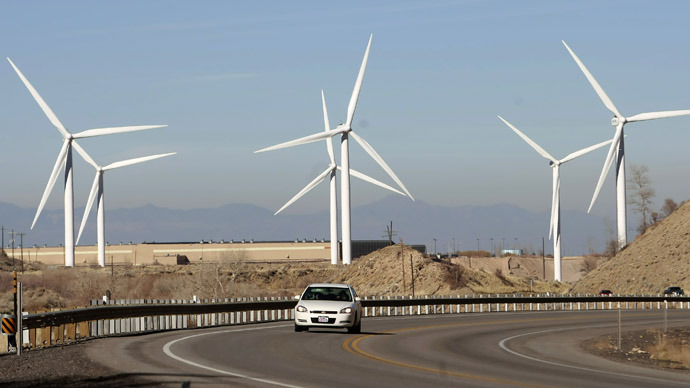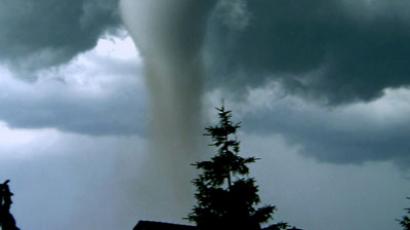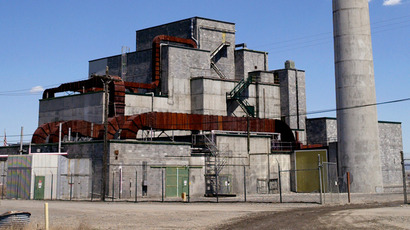'Green' energy kills American eagles

Wind farms kill about 83,000 hunting birds each year, including hawks, falcons and eagles. Killing an American eagle is federal crime, but despite the mass die-offs, the Obama administration has never once fined or prosecuted a wind energy company.
At wind farms throughout the US, iconic and protected birds regularly fly into spinning turbines. The crippled bodies of eagles are often found at the base of the machines after being cut up by the quickly spinning blades.
These birds of prey were once included on the list of threatened and endangered species – and although they are no longer listed, their population is still significantly less than it was in the early 20thcentury. Under the Bald and Golden Eagle Protection Act of 1940, disturbing, killing or taking the birds or their eggs is a federal offense punishable by a maximum of two years imprisonment and a $250,000 for an individual felony conviction, and $500,000 for a felony conviction of an organization.
The Obama administration has prosecuted oil companies when birds died in their waste pits and power companies when they were electrocuted, but has never once fined or prosecuted a wind farm.
In Converse County, Wyo., a wind farm owned by PacifiCorp kills about one golden eagle each month, the Associated Press reports. Wind farms at Altamont Pass, Calif., kill more than 60 per year. Across the country, more than 573,000 birds are killed on wind farms each year, 83,000 of which are hunting birds, the Wildlife Society Bulletin reports.
“There is nothing in the evolution of eagles that would come near to describing a wind turbine. There has never been an opportunity to adapt to that sort of threat,” Grainger Hunt, an eagle expert, told AP.
The number of deaths could be even higher than estimated, since many companies do not disclose the number of birds that become mangled at the blades of their turbines. It is also likely that companies underreport this number.
Some wildlife enthusiasts have condemned Obama for his hypocrisy in prosecuting oil companies for contributing to bird deaths, while ignoring the faults of the ‘green energy’ industry. The BP oil company paid $100 million in fines for harming migratory birds during the 2010 Gulf oil spill, while PacifiCorp paid $10.5 million for electrocuting 232 eagles in 2009.
PacifiCorp also operates several wind farms, which have killed at least 20 eagles but for which it faced no fines or prosecution.
“It is the rationale that we have to get off of carbon, we have to get off of fossil fuels, that allows them to justify this,” Tom Dougherty, an environmentalist who previously worked for the National Wildlife Federation, told AP. “But at what cost? In this case, the cost is too high.”
If the US government were to enforce the law regarding the killing of eagles at wind farms, then green energy companies may be more inclined to build farms in areas where there are fewer birds of prey. But enforcing this law would likely slow down the wind farm industry, which would contradict the administration’s goal of boosting renewable energy industries, including wind and solar.
“Clearly, there [is] a bias to wind energy in their favor because they are a renewable source of energy, and justifiably so,” Rob Manes of the Nature Conservancy told AP. “We need renewable energy in this country.”
It may be near impossible for both eagles and wind turbines to co-exist in the long run – but with the administration warning about the effects of climate change and urging greater investments in wind farms, the US national bird could once again end up on the threatened species list.














